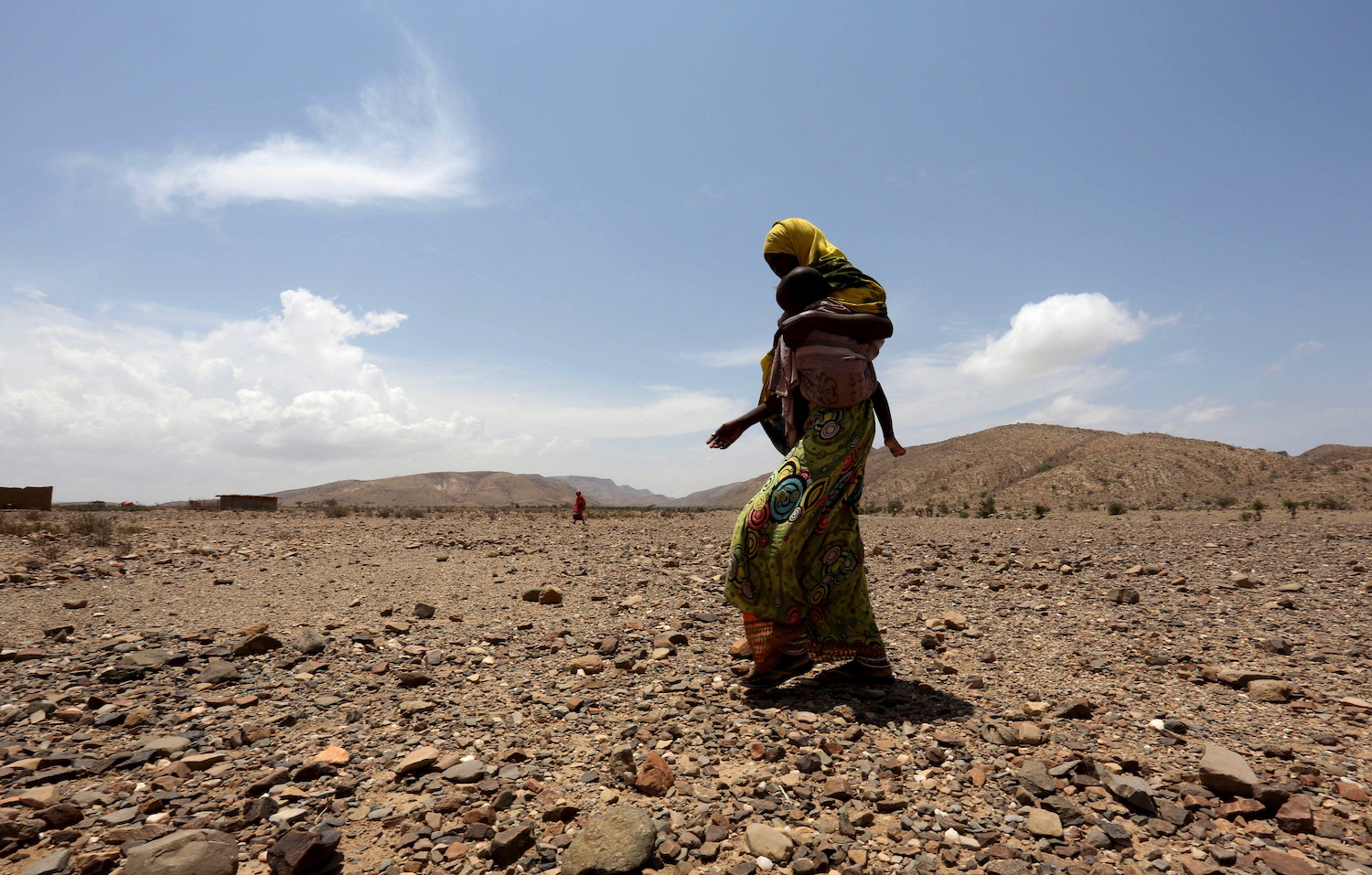The Horn of Africa is experiencing its worst drought in more than 40 years. The East African region stretches from Eritrea in the north, through Ethiopia and Djibouti to the southern tips of Kenya and Somalia.
More than 18 million people face severe hunger in Ethiopia, Somalia and Kenya, according to the US government's Humanitarian Information Unit (HIU).
Around 7 million children are acutely malnourished, it says, while the UN refugee agency UNHCR says an estimated 1.5 million people have been displaced. The region has experienced lower-than-average rainfall for four consecutive years.
A combination of climate change, armed conflicts, rising international food and fuel prices and the impact of COVID-19 are factors behind the current crisis. Russia’s war on Ukraine has impacted wheat and fertilizer supplies to the Horn of Africa.
At the same time, the drought has had a devastating effect on farming, with millions of livestock deaths and significant drops in food production because of failed harvests. The UN says the cost of an average food basket has risen by 66% in Ethiopia and by 36% in Somalia, leaving many people unable to afford even basic items.
Around 420,000 people have been internally displaced in Ethiopia by drought since 2021, according to the HIU. Approximately 7.4 million are food insecure and more than 4.7 million children are facing acute malnutrition. On top of this, more than 1 million livestock animals have died.
The conflict in the northern region of Tigray, ongoing since November 2020, has also worsened the humanitarian situation in Ethiopia. In Somalia, over 7 million people don’t have enough food and 1.5 million children under the age of five are facing acute malnutrition, the HIU says.
More than 800,000 people have been internally displaced, while around 16,000 have crossed the border into Ethiopia and 4,000 have fled to Kenya, according to the UN. The UN also estimates that a third of households have lost their livestock herds in just over a year.
More than 4 million people in Kenya are food insecure and almost 1 million children under five are facing acute malnutrition, according to the HIU. An estimated 1.5 million livestock have died. However, the UN does not expect long-term internal displacement or people to cross into Ethiopia or Somalia.
People in these countries are resorting to desperate measures to feed themselves and their families, according to the World Health Organization (WHO). It says acute malnutrition is high, especially among children. And as hundreds of thousands of people travel in search of food and clean water, they become even more at risk from outbreaks of disease. Health workers say measles, pneumonia, diarrhoea, cholera and malaria all pose a threat. The WHO says it is providing vaccinations for as many at-risk groups as possible.
“The cost of inaction is high,” says the WHO’s Assistant Director-General for Emergency Response Ibrahima Socé Fall.
“While the clear priority is to prevent people from starving, we must simultaneously strengthen our health response to prevent disease and save lives. Even one life lost from a vaccine-preventable disease, diarrhoea, or medical complications from malnutrition in today’s world is one life too many.”
UNHCR is appealing for $42.6 million to deliver life-saving assistance and protection to Ethiopia, Kenya and Somalia. It says the money will help meet the immediate needs of just over 600,000 refugees in these countries, along with their host communities.
More than 940,000 internally displaced persons and their host communities will be the focus in Ethiopia and Somalia. UNHCR says immediate needs include the provision of food, water, shelter and sanitation, as well as healthcare.
Almost $105 million in humanitarian assistance is already being provided through the US Agency for International Development (USAID).
It says the funding will also go towards protection for vulnerable people, such as safe spaces for displaced women and girls. The US says it has sent just over $500 million of humanitarian assistance to the Horn of Africa since the start of October 2021, making it the largest single-country donor.
Meanwhile, the WHO says it has allocated more than $16 million from its Contingency Fund for Emergencies (CFE) to what it calls an “unfolding health emergency” that is also reaching into Djibouti, South Sudan, Sudan and Uganda. This is the CFE’s largest financial allocation to date, and the WHO estimates that 80 million people are facing hunger in this wider region.











